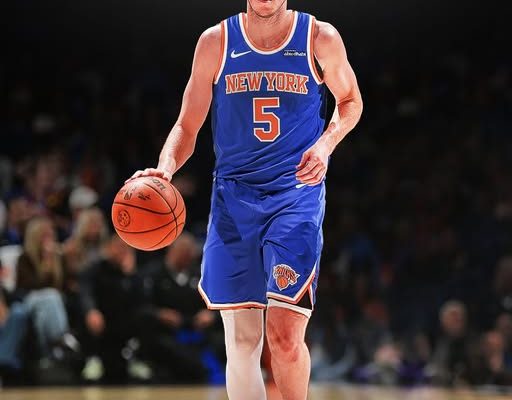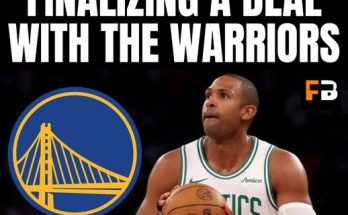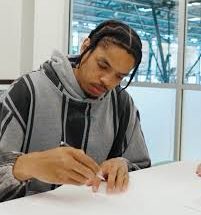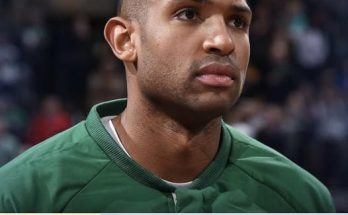In the evolving landscape of NBA free agency and trade speculation, few rumors carry as much intrigue as the recent chatter around Austin Reaves potentially joining the New York Knicks. This idea, recently floated by NBA insider Chris Mannix, has begun gaining traction in media circles and among fans alike. At first glance, it may seem like another offseason talking point meant to stir conversation. But upon closer examination, the potential pairing of Reaves with the Knicks opens a Pandora’s box of strategic questions, salary cap considerations, team chemistry implications, and deeper thoughts on what both Reaves and the Lakers want long-term. For Knicks fans, Lakers fans, and basketball purists alike, this possibility merits deep exploration.
Austin Reaves, the undrafted Arkansas native who quickly rose from NBA anonymity to a prominent role with the Los Angeles Lakers, has become more than just a feel-good story. He’s a player who has proven himself time and again on big stages, from clutch playoff performances to his role on Team USA. Despite not being a household name entering the league, Reaves has forced his way into the spotlight with grit, basketball IQ, and a well-rounded skill set. At just 26 years old, he already embodies the qualities of a high-IQ combo guard who can initiate offense, knock down threes, and play unselfishly within the team concept.
So why would the Knicks, a team already boasting depth at the guard position, even entertain the idea of adding Reaves? And why would the Lakers risk losing a player who has been a crucial part of their supporting cast alongside LeBron James and Anthony Davis? The answer lies in both short-term aspirations and long-term roster construction.
From the Knicks’ perspective, their continued push to build a legitimate championship contender in the Eastern Conference is driving a philosophy rooted in flexibility and opportunity. Under team president Leon Rose, New York has embraced a patient yet opportunistic approach to team-building. Their front office has consistently sought ways to balance win-now competitiveness with an eye on the future, often favoring low-risk, high-reward acquisitions. Jalen Brunson has been a home run. Josh Hart and Donte DiVincenzo have been solid glue guys. Julius Randle, despite some inconsistency in the postseason, has been an All-NBA player when healthy. The Knicks are close, and adding the right player could push them into true contender status.
Reaves represents a unique value proposition for a team like New York. He’s on a team-friendly contract—four years, \$54 million—which is extremely manageable under the new Collective Bargaining Agreement. He brings positional versatility as a 6-foot-5 guard who can play on or off the ball. He’s unselfish, works well within a motion offense, and can create his own shot without needing the offense to run through him. He’s also a plus defender who gives effort on that end and has the lateral quickness to switch across multiple positions.
From a fit standpoint, Reaves could slot in seamlessly next to Jalen Brunson in the backcourt. While Brunson thrives with the ball in his hands, Reaves has shown he can operate as a secondary playmaker or spot-up shooter. This dynamic would allow the Knicks to maintain offensive fluidity without overloading Brunson, especially during playoff scenarios when teams adjust and blitz primary ballhandlers. Reaves would also bring a level of calm decision-making in late-game situations, something the Knicks could have used more of during their playoff exit.
But this potential move isn’t just about basketball fit—it’s about timing. The Knicks have been stockpiling assets—young players like Quentin Grimes and Miles McBride, multiple future first-round picks, and tradable contracts. This puts them in a position of strength when the opportunity arises to swing a deal for a high-level starter or rotation piece. In Reaves, they could find a player who not only upgrades their backcourt but also fits within their financial structure without jeopardizing flexibility for a future superstar acquisition.
That brings us to the Lakers. Why would Los Angeles even entertain trading Reaves, especially when he’s proven to be such an effective piece alongside LeBron and AD? The answer may not lie in Reaves’ performance, but rather in the Lakers’ broader pursuit of star power and roster consolidation. The Lakers, under GM Rob Pelinka, have long operated under the model of star-chasing. While this has yielded a title in 2020, it has also created roster volatility. With LeBron James entering the twilight of his career, the Lakers are caught between maximizing their current window and preparing for life after LeBron.
In that context, Reaves’ name has inevitably surfaced in trade discussions—not because the Lakers want to move him, but because his contract is attractive to teams and his value is at a high point. If the Lakers were to pursue a blockbuster deal, perhaps involving a player like Donovan Mitchell, Zach LaVine, or another All-Star level name, Reaves would almost certainly be part of the outgoing package. His inclusion could be the sweetener that makes the money work or tilts the scale in a potential deal.
But even if the Lakers aren’t actively shopping him, Reaves could become collateral damage in the pursuit of roster upgrades. The harsh reality of the NBA is that good players on good contracts are often used to facilitate the acquisition of great players on expensive contracts. Reaves is a rare combination of affordability, upside, and current production—exactly the kind of asset front offices covet in trade negotiations.
From a cultural standpoint, Reaves leaving the Lakers would be a loss. He’s a fan favorite in Los Angeles, loved not only for his underdog rise but also for his tough, no-nonsense demeanor. He plays with edge, talks trash, and backs it up. He has embraced the L.A. spotlight without trying to be more than he is. Losing him would not just be a basketball subtraction; it would mark a shift in the identity the Lakers have tried to build around LeBron and Davis—a gritty, team-first core capable of grinding out games in the West.
That said, if the Lakers believe that bringing in a third star or reshuffling the roster is essential to making one more championship run before LeBron retires or moves on, then moving Reaves becomes a calculated risk. It’s about timeline alignment. Reaves is still entering his prime, while LeBron is near the end of his. If the Lakers are trying to win now, they may feel that a more established third option is necessary. If that move involves sending Reaves to New York, the Knicks could end up with a major steal.
Let’s also not ignore the off-court elements here. Reaves is a marketable player—charming, clean-cut, and with a blue-collar image that plays well in both L.A. and New York. Madison Avenue would likely embrace him, and Knicks fans are known to idolize players who hustle, grind, and leave it all on the court. Just imagine the energy in Madison Square Garden when Reaves dives for a loose ball or hits a big shot. He’s the kind of player who can become a cult hero in New York, in the same way guys like John Starks or Latrell Sprewell did in earlier eras.
There’s also the question of how Reaves himself would feel about such a move. Publicly, he’s said all the right things about loving L.A. and wanting to stay. But players, especially in the modern NBA, are becoming increasingly aware of how quickly circumstances can change. Reaves, who grew up idolizing Kobe Bryant and playing for the Lakers, may have emotional ties to the franchise. But he also likely wants to play in meaningful games, in a system that values his strengths, and for a team that gives him a long-term role. If the Lakers’ priorities shift and he becomes a trade piece, Reaves may ultimately embrace the move, especially to a destination like New York.
It’s important to note that Chris Mannix didn’t report that trade talks were happening—he merely speculated that New York could be a logical landing spot for Reaves in the future. But that kind of insight often has roots in real conversations happening behind the scenes. NBA insiders don’t just throw darts; they hear things, connect dots, and share possibilities that often foreshadow future moves.
The timing of this speculation is also telling. The Knicks are coming off a season where they took meaningful steps forward but fell short in the postseason. The Lakers, meanwhile, were eliminated early in the playoffs and face major questions about how to rebuild around an aging LeBron James. Both teams are looking for answers. Both have pressure to improve. And both may find that a deal involving Reaves could solve multiple problems at once.
Of course, such a trade wouldn’t come easy. The Knicks would likely have to give up a package that includes young talent, draft capital, and matching salary. Whether that means moving on from someone like RJ Barrett, Quentin Grimes, or a combination of pieces remains to be seen. But if the Knicks believe Reaves is a foundational piece who can help unlock their ceiling, the price might be worth it.
In the final analysis, the idea of Austin Reaves to the Knicks isn’t just about roster fit or trade mechanics—it’s about vision. It’s about how franchises view their trajectory, how they balance present goals with future planning, and how they define success. For the Knicks, landing Reaves would be another step toward building a sustainable, cohesive core that can compete in the East for years to come. For the Lakers, moving him would be a difficult but possibly necessary decision in the pursuit of another title.
Whether or not this potential deal ever materializes, the fact that it’s being seriously considered speaks volumes about Reaves’ growth, the Knicks’ ambition, and the ever-shifting dynamics of NBA team-building. As the offseason progresses and both teams reassess their rosters, this rumor is likely to linger in the background, ready to resurface at any moment. And if it ever becomes reality, it could become one of the most quietly transformative moves of the year.



